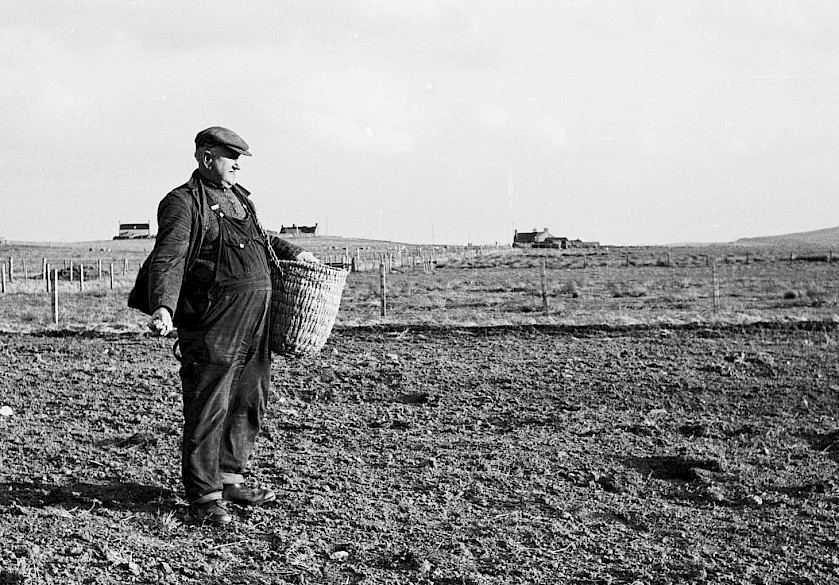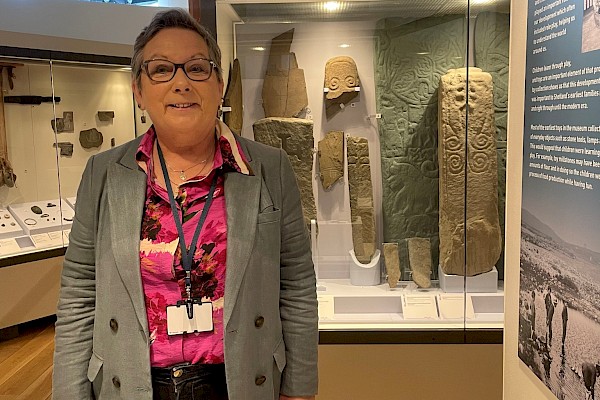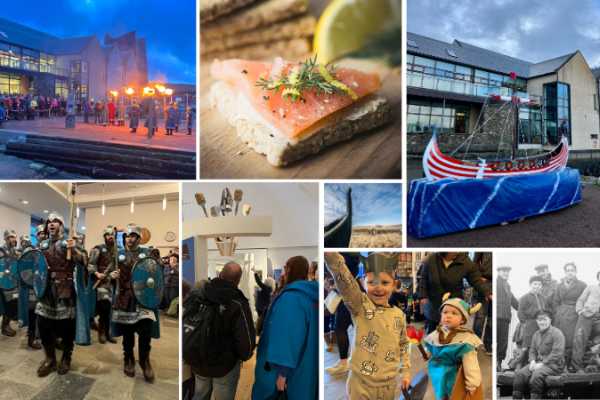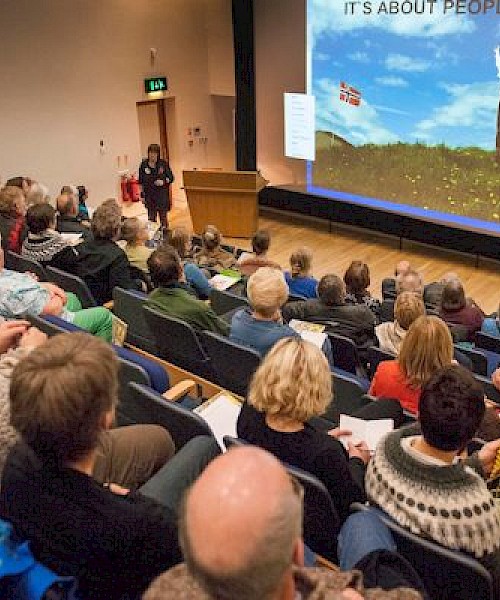The Crafts of Foragers - new display
Shetland Museum and Archives is proud to announce a new display, The Crafts of Foragers, offering a captivating glimpse into Shetland's rich tradition of basket and rope-making using locally foraged plants. The exhibit, now open to the public, includes a small collection of Shetland baskets, highlighting the wide range of native plants historically used to create everyday items essential for life on the islands.
Developed in response to the growing local interest in sustainable practices and the historical use of plants, The Crafts of Foragers delves into Shetland’s past, when plants were skilfully harvested and fashioned into ropes, containers, furniture, and more. Long before the advent of modern materials such as plastic, rubber, and cardboard, Shetlanders relied on their deep knowledge of native plant species, selecting them for their unique properties like strength, pliability, and rot resistance.

Jimmy Halcrow, Sandwick, sowing seed carried in a boddi, c.1950
Curator of the display, Carol Christiansen explains: "Straw and other plants were an integral part of daily life in Shetland for millennia. The skills involved in making these items were so commonplace that they often went unremarked upon. Our ancestors foraged at optimal times in the growth cycle, creating a wide array of essential items with just their hands and a few simple tools. The display allows visitors to appreciate the intricate craftsmanship and resourcefulness that defined everyday Shetland life."
The display includes detailed information on a variety of indigenous plants and parts of non-edible grains that were used to create household items, tools and toys. From dock stems woven into fish baskets due to their rot resistance, to heather stems twisted into ropes for water-resistant containers, The Crafts of Foragers celebrates the sustainable, practical, and creative use of local resources.

Jimmy Gray tekkin the roof of the Crofthouse Museum, Dunrossness
In addition to the physical objects, the display explores the specialised language surrounding Shetland plant crafts. Visitors will learn about traditional terms like baett, describing the plaited bundle of prepared stems for drying, or birliband, a strap across the mouth of a basket. This centuries-old vocabulary offers a window into the knowledge that was passed down through generations.
Among the treasures featured are examples of Shetland's iconic skeklers hats and bӧddi baskets, used for collecting eggs, bait, fish, and seed, as well as various tools employed in the basket-making process. These artefacts provide insight into the extensive craftsmanship and ingenuity behind the objects, from the farm to the sea.
Carol Christiansen adds: "We hope this display will also serve as an educational extension to the museum’s winter straw craft club. Over the last two winters, we’ve been sharing traditional straw-craft techniques, and we look forward to continuing these workshops later in the year. We want the public to engage with this heritage and pass these skills on to future generations."
The Crafts of Foragers is located on the First Floor gallery of the Shetland Museum and Archives.
Details on the Winter Straw Crafts Club will be announced shortly.















